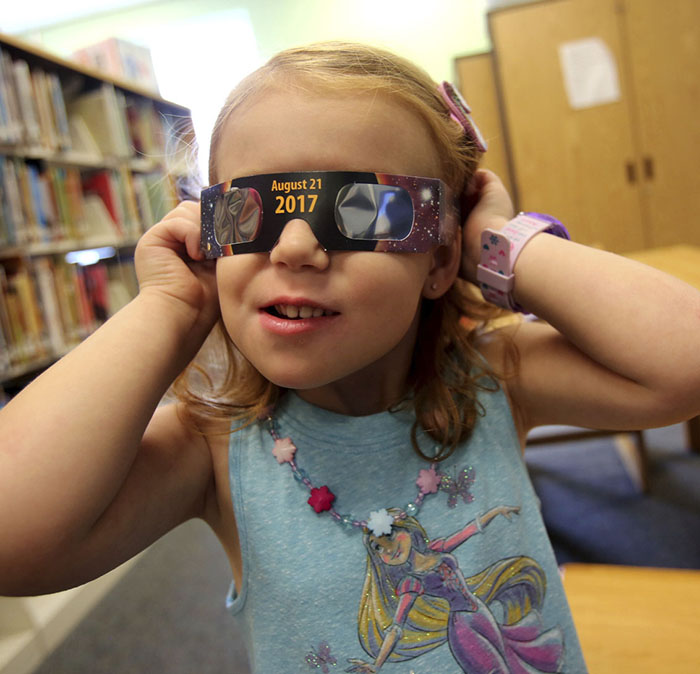How to view the 2017 solar eclipse in Brooklyn and where to get those crucial eclipse glasses
Plus: An awesome Brooklyn physics teacher explains why eclipses are important

Eclipse mania is building across the country, and though New Yorkers will not experience the full eclipse, we won’t be left out. Expect the sidewalks to be filled with bespectacled spectators staring up past the skyscrapers (or, in the case of Brooklyn, luxury towers) to catch a glimpse of one of nature’s most awesome occurrences.
On the afternoon of Monday, Aug. 21, the moon will pass between the Earth and the sun, completely blocking out the sun for about three minutes in a narrow strip stretching from Salem, Oregon to Charleston, South Carolina. (In New York City, the eclipse begins at 1:23 p.m., peaks at 2:44 p.m. and ends at 4 p.m.)
For those in this strip, day will turn into night. New York, however, is not in what astronomers call the “path of totality,” so we will experience a partial eclipse. For us, the moon will cover 71 percent of the Sun. Day will turn into … a bit darker day, during which the black arc of the moon will eat away three quarters of the brilliant sun.

Brooklyn Boro
View MoreNew York City’s most populous borough, Brooklyn, is home to nearly 2.6 million residents. If Brooklyn were an independent city it would be the fourth largest city in the United States. While Brooklyn has become the epitome of ‘cool and hip’ in recent years, for those that were born here, raised families here and improved communities over the years, Brooklyn has never been ‘uncool’.